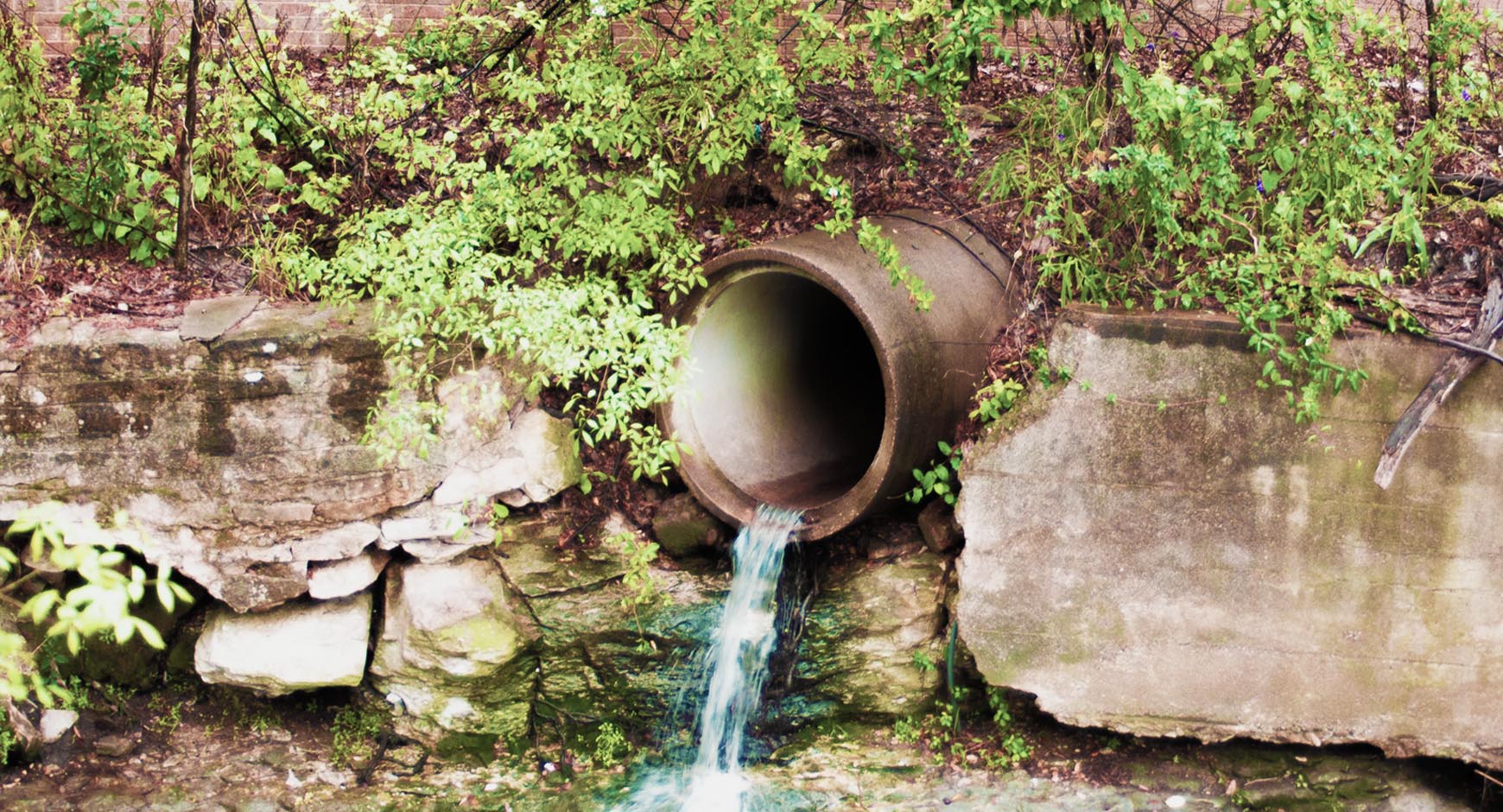Waller Creek has many functions: it is a corridor for biodiversity, a spot for research opportunities for students, and a canvas for expression and wellness for many on campus. But, arguably, one of Waller Creek’s most important functions is to funnel the rainwater downstream to the Colorado River. Over 10 million gallons of water flow down slope into the creek with every inch of rain landing on UT Austin’s main campus, joining water collected by the entire watershed.
Storm water is regulated by the Texas Commission on Environmental Quality, and UT has held its own Phase 1 MS4 (Municipal Separate Storm Sewer System) permit for more than 15 years. The goal of the permit is to minimize the pollutants like bacteria, sediment, pesticides and even lost objects in waterways and to also find ways to reduce erosion and flooding by slowing the flow of water across the landscape.
“Our permit covers our entire drainage area, from the surface to the underlying storm sewer system,” says Tejashri Kyle, Manager of Environmental Programs in Environmental Health and Safety (EHS). “The Phase 1 level puts us on par with Austin or Houston in that we have the same onus as a large city.”
Storm water management at UT is coordinated by EHS in collaboration with about 10 different departments, including crucial partners Landscape Services, Utilities and Energy Management, Project Management Construction Services and Capital Planning and Construction. Recent changes by regulatory agencies require more measureable goals; UT’s current Stormwater Management Program includes these assessments and was approved in December 2019 after several rounds of review.
Work by EHS includes quarterly visual checks of Waller Creek as well as other parts of campus for which they are stewards: Pickle Research Campus (PRC), the Brackenridge track along Lake Austin, and the Gateway apartments on 6th Street. The team monitors all construction sites, works with student organizations to reduce pollution during events, and even checks that water flushed from swimming pools is de-chlorinated and will not shock fish. EHS and Landscape Services monitor the amount of trash in the creek with two floatable stations and EHS collects water samples regularly to test for pollutants or indicators of human activity like E. coli. Waller Creek has some of the worst water quality in Austin.
“Waller Creek is on an infamous Clean Water Act 303(d) list of impaired waters because of the level of bacteria,” says Becca Oliver, an Environmental Specialist. “When I sampled the base flow of the creek a month ago, the E. coli level was six times higher than the maximum level allowed for Texas surface waters approved for primary contact recreation.” The bacterial levels in stormwater runoff entering Waller Creek can be orders of magnitude higher than base flow levels.
The team is currently planning to install pet waste stations in an effort to reduce the bacterial levels in the water, but it is difficult to drastically reduce the high bacterial load, since sources are widespread throughout the watershed. The Waller Creek watershed is six square miles and includes some of the city’s older infrastructure.
“All of the Waller area, from Airport and Lamar to Ladybird Lake, is a highly urbanized watershed and was developed before the current city standards for development were put into place” says Kyle.
A new initiative related to the MS4 permit is improving how UT handles storm water. All new construction or renovation projects must implement green infrastructure like bioretention ponds and rainwater harvesting or a combination of green and gray (traditional) infrastructure to help divert water from rushing into the creek. These storm water management strategies use the Sustainable SITES Initiative’s prerequisites as a standard. The SITES program is a rating system for sustainable landscapes that was developed by The Lady Bird Johnson Wildflower Center, the U.S. Botanic Garden, and the American Society of Landscape Architects.
“If we manage water before it gets to the creek, we reduce the likelihood of flooding and even reduce bacterial load because the water has time to filter in the landscape,” says Nena Anderson, Associate Director for Environmental Programs. “Dell Medical School did this nicely with their SITES Gold landscape that added many things onto campus for the first time, like bioswales, a native Texas prairie, and bigger areas of permeable pavement. We hope to add more features like this to campus over time.”
For more information about this story, please contact ehs-environmentalops@austin.utexas.edu. If you need to report a water quality issue, contact 512-471-3511 (during business hours) or 911 (after hours).
Written by Kristin Phillips, Communications Coordinator

